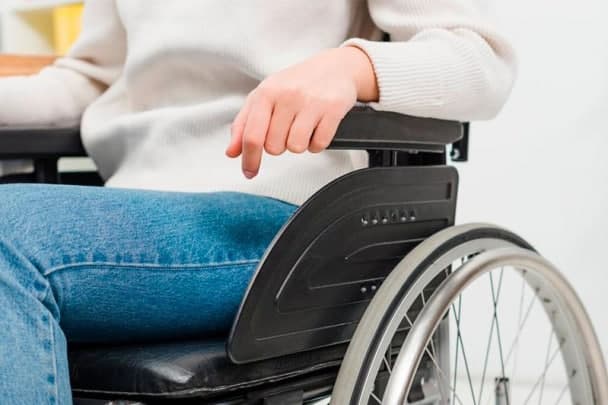The World Bank has released a new report analyzing the socio-economic challenges facing people with disabilities in Uzbekistan.
It assesses the group’s access to health, education, rehabilitation and auxiliary facilities, the labor market, infrastructure, social protection, the impact of COVID-19 on them, as well as the measures taken by the government to address the needs of persons with disabilities. The study also contains recommendations for reforms needed to improve the lives of people with disabilities. Below are excerpts from the study.
Statistics on persons with disabilities
The official number of people with disabilities in Uzbekistan is 2.1% of the population. Given that about 15% of the world’s population has some form of disability, this figure should probably be higher.
As of the end of 2019, 693.9 thousand people with disabilities in Uzbekistan (295.5 thousand women and 398.4 thousand men), including 111.3 thousand people under the age of 16 (48.8 thousand girls and 62.5 thousand boys) received pensions and social benefits.
This low official numbers can be explained by the outdated system used in the field of support for persons with disabilities, which affects the current limited definition of disability assessment and identification in Uzbekistan.
The results of the study show that about 13.5% of the country’s population aged 3 and older may have some form of disability and 3.5% may have a severe disability.
Access to medical services
The study shows that 25% of children and adults with disabilities do not receive the necessary medical care, compared to only 10% of those with disabilities. Due to payment difficulties, not knowing where to get, and other factors, this category of citizens is 3 times less likely to receive medications prescribed by doctors.
One study in 2019 found that only 26.9% of people with disabilities who needed a wheelchair used them. Almost half of the participants in this study (43.6%) stated that they needed support tools and services for people with disabilities. While 21.5% of respondents had access to these tools, only 2.8% had received them from relevant government agencies.
Gender factor and disability
According to official data, the number of women with disabilities decreased from 408.9 thousand women in 2007 and 68.8 thousand girls under the age of 16 to 295.5 thousand women and 48.8 thousand girls by 2019 (for comparison: 2019 398.4 thousand disabled men and 62,519 disabled children per year). The reason for the decline in these rates is not entirely clear, as disability is more common among women because of their longer life expectancy. Women with disabilities also face additional difficulties in obtaining “disabled” status in medical-labor expert commissions.
Opportunity environment
Lack of access to the necessary infrastructure has a negative impact on the lifestyle and well-being of people with disabilities. Recent analysis has shown that 85% of buildings and social infrastructure in Tashkent are not adapted for use by people with disabilities, although about 70,000 people live in this category.
Public transport in the capital also does not meet the criteria of convenience for people with disabilities, which has serious socio-economic consequences for the well-being of people with disabilities.
Lack of adequate infrastructure and facilities to facilitate the movement of persons with disabilities violates the rights of this category of citizens, and prevents them from full participation in social life, education, employment and participation in other activities. As a result, it negatively affects their quality of life. Thus, people with disabilities, especially those with physical impairments, fall into a state of forced social exclusion, become dependent on others, and are unable to enjoy the benefits of living in cities.
Opportunity to study
The WB study shows that children with disabilities have almost 20% lower access to pre-school education than non-children with disabilities, which could worsen the level of retention of children with disabilities in the upper grades.
As an experiment, in the 2021-2022 academic year, an inclusive education system was introduced in 42 secondary schools in the cities of Uzbekistan and districts of Tashkent city. According to the results of this pilot program, an inclusive approach to education will be introduced in other regions of the country. However, the study shows that secondary schools are not yet ready for this, as they do not have accessible infrastructure and toilets for children with disabilities, the necessary equipment for the educational process, qualified personnel.
For example, there is a need for sign language interpreters, textbooks in Braille for the blind, teachers and tutors for children with learning disabilities and hearing impairments.
Employment opportunity
Research has shown that people with disabilities are about four times less likely to find work than those without. In 2019, only 8.9% of men with disabilities aged 16-59 and only 4.4% of women with disabilities aged 16-54 were officially employed, which is only 7.1% of those with disabilities. In rural areas, the figure was even lower, at 5.8%.
The study shows that the structure of the current social protection system reduces the motivation of people with disabilities to look for work in the formal labor market. There are limits to those who are medically “incapacitated” by medical-labor expert commissions on the possibility of receiving disability benefits.
This excludes people with disabilities from the labor market. Persons with disabilities are afraid of losing their disability benefits when regular medical examinations are conducted by medical-labor expert commissions.
This is why they prefer to work more in the informal sector of the economy. However, disability-based discrimination is higher here and wages are about twice as low as in the formal sector.
Impact of the COVID-19 pandemic
According to a monthly survey “We listen to citizens of Uzbekistan”, which assessed the socio-economic situation of about 4,000 households in all regions of the country with the support of the World Bank, individuals with disabilities during the quarantine restriction period reported deteriorating mental health.
In particular, from July to December 2020, an average of 51% of this category of citizens rated their mental health as “satisfactory” or “poor”. In August 2020, the figure peaked at 61%. During strict quarantine, individuals with disabilities faced difficulties in accessing markets, as well as specialized medical and social services.
Recommendations on social integration of persons with disabilities
The study provides recommendations for the involvement of persons with disabilities in social life.
For example, it is necessary to harmonize legislation and state programs in the field of protection of this category of citizens with the rules and principles of the UN Convention on the Rights of Persons with Disabilities; harmonization of the system of statistics and data collection related to persons with disabilities on the basis of universally recognized international definitions and tools; as well as strengthening interagency coordination and monitoring mechanisms for the implementation of the provisions of the UN Convention on the Rights of Persons with Disabilities at the national level.
In addition, the study recommends that authorities develop the capacity of local NGOs to represent the interests of persons with disabilities; promote a change in the rules of conduct for persons with disabilities, to introduce the principle of a universal environment (infrastructure) accessible to all, including persons with disabilities; actively develop social services for the care of persons with disabilities and introduce the practice of rehabilitation of patients with disabilities in the local community on the basis of WHO recommendations, use existing public structures such as mahallas; encourage the full involvement of persons with disabilities in education and employment systems.






